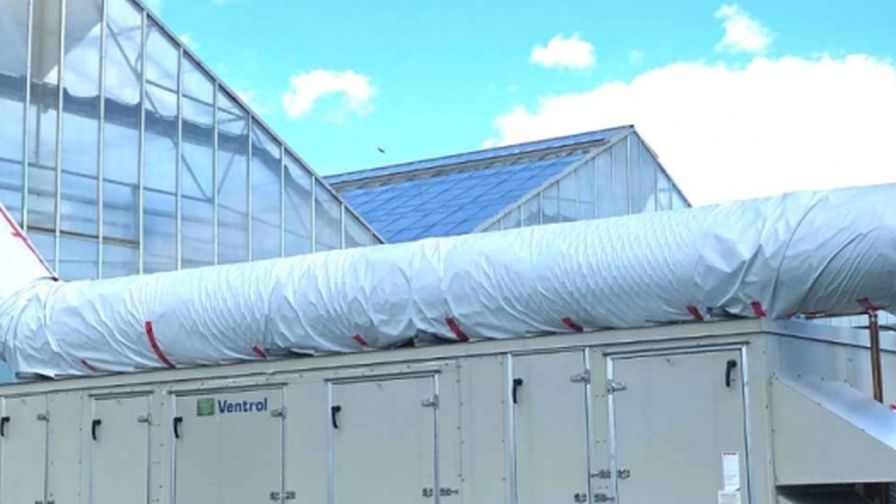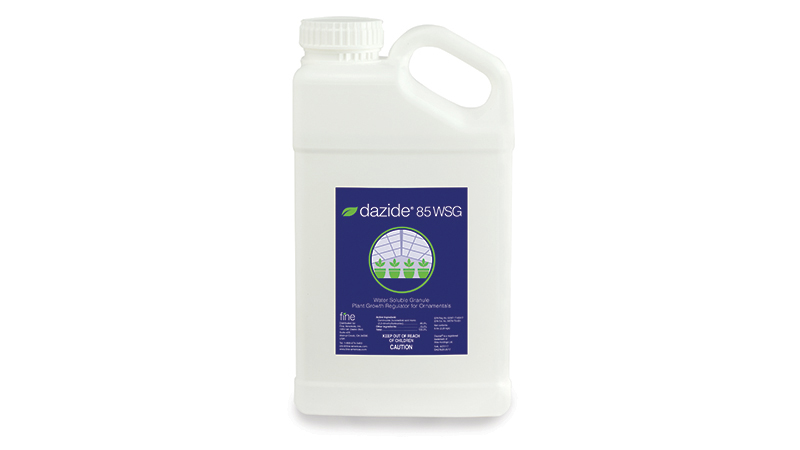How Dehumidification Technology Can Lower Greenhouse Energy Costs

Photo: Agricultural Adaptation Council
High humidity levels inside greenhouses can reduce crop growth and result in poor quality produce. Many growers have traditionally resorted to ventilation to manage the issue, but while effective, this strategy also causes heat loss, which can increase a farm’s energy costs.
Flowers Canada (Ontario) recently set out to find a solution to this challenge, accessing funding through the Greenhouse Renewable Energy Technologies (GRET) Research & Development Initiative to test four different energy recovery technologies for their potential to reduce grower energy needs during the peak greenhouse use period of fall through early spring.
This included a mechanical refrigeration dehumidifier (MRD), a liquid desiccant dehumidifier (LDD) that runs humid air past a brine solution to absorb the moisture and then heats the brine to regenerate it, and a heat recovery ventilation (HRV) system that is located outside the greenhouse and warms up the cool, dry air as it enters the facility. The fourth technology is an energy recovery ventilator (ERV) prototype that combines the liquid desiccant approach with heat exchange into a single system.
“We are looking for alternative ways to decrease energy consumption to both reduce grower costs and reduce fossil fuel use,” says Dr. Jingjing Han, Research Engineer with Flowers Canada (Ontario), in a recent post on AdaptCouncil.org.
Building on findings from that initial project, Flowers Canada was successful in receiving funding from the Greenhouse Competitiveness and Innovation Initiative (GCII) to conduct more in-depth research into the four technologies and get a better understanding of how they can integrate into existing greenhouse control systems.
“Finding ways to reduce energy costs and increase efficiencies is a top priority for Ontario’s greenhouse growers,” says Ontario Minister of Agriculture, Food & Rural Affairs, Lisa Thompson. “By continuing the implementation of programs such as the Greenhouse Competitiveness and Innovation Initiative, we are furthering our investments with the greenhouse industry, finding ways to reduce their carbon footprint, and supporting farmers as stewards for our environment.”
An Ontario flower greenhouse had three systems – MRD, LDD and HRV – installed in the GRET project in 2018, an herb greenhouse had four LDD units installed, and a tomato greenhouse in Leamington had an ERV system installed.
Despite some setbacks with malfunctioning units that couldn’t be fixed due to supply chain shortages and changes in crops and production strategies, the researchers were able to gather and analyze enough data to make some useful assessments about the technologies being tested.
“All systems are able to control humidity much better than conventional ventilation, but each has their own advantages and disadvantages,” says Han, adding that none of the systems were effective throughout the entire year.
According to Han, there are two things greenhouse growers should take away from the research:
- Any of the systems can be useful tools for humidity control with reduced heat loss, but they must be properly integrated into the greenhouse’s internal control system to operate cost effectively.
- Energy and cost-savings are most impactful from October to March. Some of the systems can result in energy cost savings of more than 10% during months like January, February, or March, but the relative price of energy (e.g., natural gas vs electricity) plays a significant role relative to cost savings among the dehumidification systems.
Continue reading at AdaptCouncil.org.









